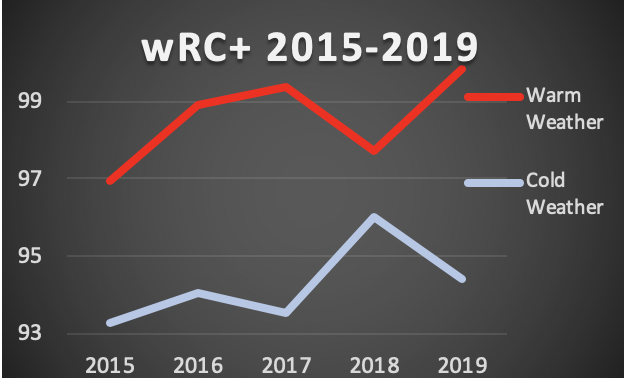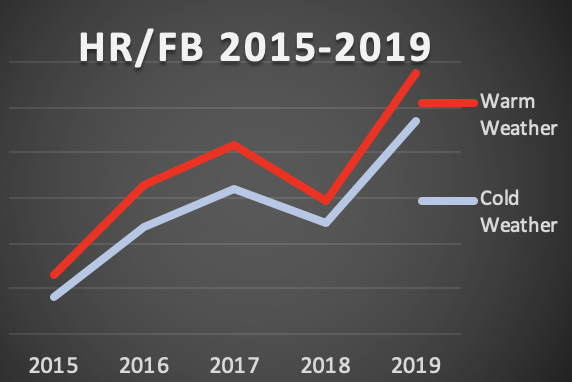“Uncertainty is the only certainty.”
This quote seems more pertinent now than ever. The baseball season is in flux. Who knows if it will happen? However, employing a glass-half-full approach, I’m going to suggest one major change Rob Manfred should institute before the season begins: Raise the major league roster maximum for pitchers from 13 to at least 15.
In February, MLB and the MLBPA solidified their agreement to increase the rosters from 25 to 26. This increase capped the number of pitchers on the roster at 13. February was before we had a pandemic on our hands. Now, due to these extenuating circumstances, it’s become evident that pitchers are not going to have ample time to get ready for the season. Not only are pitchers lacking training and routine, but this is probably the only time in their entire baseball career where they haven’t had the capability to throw off a mound to a catcher (besides Gerrit Cole).
This can be detrimental to a pitcher’s health due to the rushed timeframe that will occur before the season starts. During a traditional season, pitchers and catchers report to spring training around Feb. 10, and are then given seven weeks to prepare for the regular season. If there is a “spring” training, it will undoubtedly be an abbreviated version. The pitchers will be lucky to get two or three weeks of preparation. That is not enough!
During the first couple months of this regular season, we may see historically high pitcher ERA and FIP marks. Not only because of the lack of preparation, but also due to batters’ more efficient approach of recent years. By swinging with a higher launch angle and barreling the ball more than ever, pitching statistics have dipped. In 2014, league FIP was at 3.74 and has essentially increased each year and is currently at 4.51 (21% increase!). Another statistic that typifies this trend of increased hitter efficiency is the proliferation of Hard Hit%.
Those are just two of the reasons that pitcher’s statistics may be inflated this season, and a third is a result of the weather. Major League Baseball would most likely resume between early June or late July, and these are the hottest and most humid months of the year. And during these months, the balls travels further, and with this, almost each and every hitting stat increases. I’ll highlight two salient hitting statistics: wRC+ and HR/FB. During the warm weather months (June, July, August), hitter stats are superior compared to the cold weather ones (April and May) in each year.


Baseball stats are holy. The integrity of the game’s statistics is at the utmost importance of the game of baseball. The pitcher-hitter pendulum has swung towards the hitters. The residual baseball effects of COVID-19 will put many of the stats we hold dear in doubt and will swing the pendulum off even more. Will the Cy Young Award winner have an ERA above 4.00 for the first time in history? Will the MVP have a .400 batting average? With a smaller sample size and this trend growing faster than ever, anything is possible.
These three significant factors (injury risk, trend of increased ERA and warm/humid weather conditions) will lead to a rapid increase for all hitting statistics. Maybe Manfred understands this and will welcome the increased scoring in order to gravitate fans to the sport. But at what cost? If you don’t buy into the significance of the statistics’ argument, I have no doubt that you should concede when it comes to the increased injury prevalence. Injuries are bad for everyone: the organizations, the fans, revenue, and of course, the players. The frequency of injuries has drastically increased over the past decade, and this has been accentuated by the prevalence of Tommy John surgery, which occurs for over 25% of pitchers now.
Imagine how many injuries will emerge due to pitchers not receiving a full two months to prepare. If Manfred were to increase the major league roster maximum for pitchers from 13 to at least 15, it would alleviate the pitchers’ injury risk significantly. Managers wouldn’t be forced to give their starter an extra inning just because they have no one left in their bullpen. This is an easy fix and should be implemented immediately. Before the season starts, this adjustment needs to happen. Manfred cannot afford to risk the players’ safety any more with COVID-19 still pervasive. He’s made some poor decisions in the past few months, but this is where he can make up for these. Keep the players safe and healthy.
Feature Image by James Peterson (Follow @jhp_design714 on Instagram)


So true. Bring on the 15 Pitchers. Pitchers need more time to get ready for season and the Yankees have great depth of pitching so they will benefit from this rule.